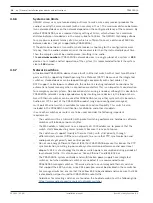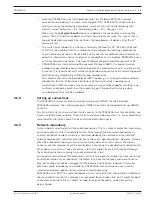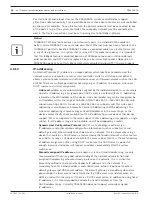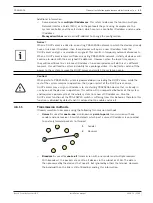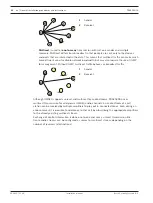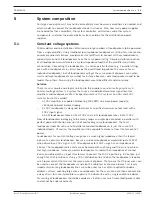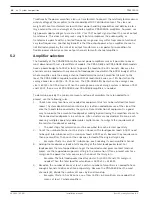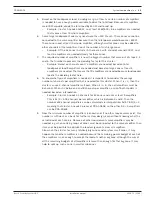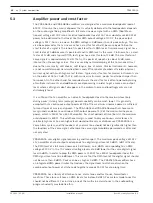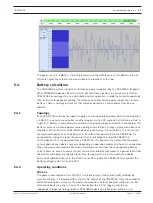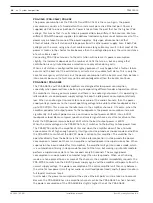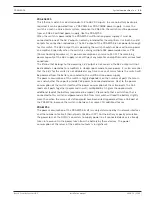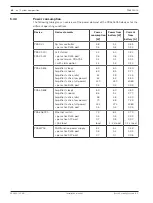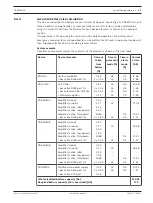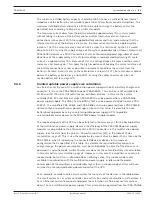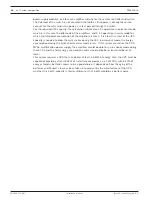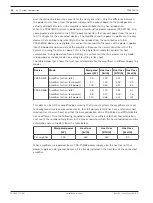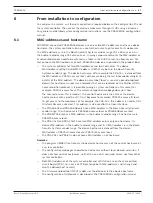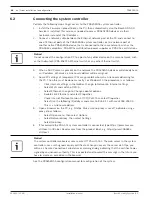
PRAESENSA
System composition | en
33
Bosch Security Systems B.V.
Installation manual
2019.11 | V1.00 |
5
System composition
For large sound systems it may not be immediately clear how many amplifiers are needed, and
which model, to connect the loudspeaker loads in all zones. Also, how many power supplies
are needed for these amplifiers, the system controller, call stations and other system
components, and what the backup battery size should be for the multifunction power
supplies.
5.1
Constant voltage systems
Public address audio installations often require large numbers of loudspeakers to be powered
from a single amplifier. Using traditional low impedance loudspeakers (4‑16 ohm), like used in
consumer audio installations, would make it very difficult to connect all these loudspeakers,
especially when not all loudspeakers have the same power rating. Simple parallel connection
of all loudspeakers would create a very low impedance load that the amplifier most likely
cannot drive. Connecting the loudspeakers in a series-parallel fashion (e.g. 4 parallel strings,
each with 4 loudspeakers in series) keeps the overall load impedance the same as for an
individual loudspeaker, but all loudspeakers will get the same amount of power, even when
small and large loudspeakers are mixed, for instance because some loudspeakers need to be
louder than others. Also wiring the loudspeakers would be difficult and error prone.
Solution
There is a very simple and elegant solution to this problem: constant voltage systems. A
constant voltage system is a system that uses a standardized maximum signal level for
amplifiers and loudspeakers. Most frequently used are 70
V systems (in USA) and 100
V
systems (rest of the world).
–
A 100
V amplifier is capable of delivering 100
VRMS sine wave power (equal to
282
Vpeak‑to‑peak) before clipping.
–
A 100
V loudspeaker is designed to deliver its specified maximum output level with a
100
V input signal.
–
A 30
W loudspeaker takes 30
W at 100
V and a 6
W loudspeaker takes 6
W at 100
V.
Now all loudspeakers belonging to the same group can simply be connected in parallel with
perfect power distribution and no risk of overloading some loudspeakers. The total
loudspeaker load of such a set of parallel connected loudspeakers is just the sum of all
individual loads. Of course, the amplifier must be capable to deliver at least that amount of
power.
Loudspeakers for constant voltage usage have a much higher impedance than the typical
8
ohm of a consumer loudspeaker, because an 8 ohm loudspeaker would dissipate 1250
W
when driven by a 100
V signal. A 10
W loudspeaker for 100
V usage has an impedance of
1
kohm. The loudspeaker voice coil cannot be made with such long and thin wire to achieve
that high impedance. Instead, a normal loudspeaker is used with an impedance of around
8
ohm, combined with an input transformer to convert the 100
V input to e.g. 9
V output, just
enough for 10
W into 8
ohm. Using a 100
V distribution line to drive the loudspeakers requires
much lower currents to transfer the same amount of power. That means that thinner wires can
be used to connect the loudspeakers and also the cable losses are much lower. This is very
important when long loudspeaker lines are to be used, such as often required for public
address systems, covering large areas. Loudspeakers for the same zone are then connected in
a daisy chain, to make it possible to supervise the whole line with a single end-of-line device.
Star wiring of loudspeakers should be avoided, as it often uses much more loudspeaker cable
and cannot be supervised easily.
Summary of Contents for PRAESENSA
Page 1: ...PRAESENSA Public Address and Voice Alarm System en Installation manual ...
Page 2: ......
Page 193: ......










